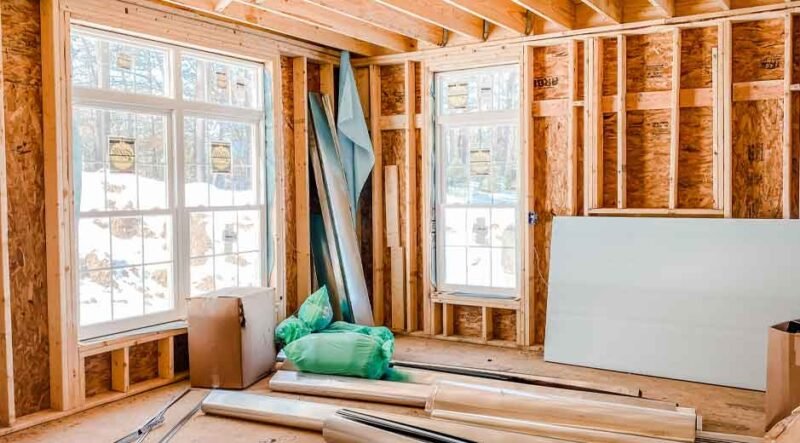Home renovation looks simple enough on paper: draw up a budget, hire a builder, and start transforming your space. But once you’re in the thick of it—permits, delays, material upgrades, and the thousand small decisions between—you start to realise why experienced professionals always seem to warn you about “the little things that add up.”
If you’ve ever spoken to professional home renovation contractors, they’ll tell you the same truth: it’s not the big-ticket items that sink your budget, it’s the hidden costs you didn’t see coming. Let’s break down the nine most common ones they see time and again—and how to prepare for them.
1. The Permit Puzzle You Didn’t Plan For
Every city has its own building codes, zoning rules, and permit fees. Many homeowners assume they only need one or two basic approvals, but a kitchen or basement remodel often triggers several layers of compliance—electrical, plumbing, and structural.
Delays waiting for approvals can add costs too, especially if your contractor’s crew has to pause mid-project. Always ask who’s handling the permits and what’s covered in their quote.
Helpful read: The City of Toronto’s building permit guide breaks down the process clearly.
2. Structural Surprises Behind the Walls
What you can’t see is what usually hurts the most. Once drywall or flooring is removed, contractors might discover water damage, mould, or outdated wiring. These issues must be fixed before the renovation continues.
No reputable contractor will simply “cover it up,” so you’ll need to budget a contingency of at least 10–15% for unforeseen structural repairs.
3. Delivery Fees and Material Shortages
When you’re flipping through catalogues or browsing at showrooms, the displayed prices often exclude delivery or freight fees. Materials like custom cabinetry or tile sourced from abroad can come with unexpected logistics costs—especially if shipping delays force work to stop temporarily.
Ask your contractor whether material delivery and storage are included in their quote and how they handle supply disruptions.
4. Utility Relocations and System Upgrades
Renovations that touch your plumbing, gas, or electrical layout almost always trigger the need for upgrades. Maybe your electrical panel isn’t large enough for new kitchen appliances. Maybe that old plumbing can’t support a modern shower system.
These infrastructure updates aren’t glamorous, but they’re essential—and costly. They can add thousands depending on the age of your home.
5. Waste Disposal and Cleanup Costs
Few homeowners realise how much debris a renovation generates. Old flooring, drywall, tiles, and packaging from new materials can fill multiple dumpsters.
While some contractors include disposal fees, others bill it separately. Ask early whether cleanup and waste removal are part of your contract—and if not, how they estimate those costs.
Resource tip: Waste Reduction Week Canada offers practical advice for recycling and reusing materials from construction projects.
6. Design Changes After the Work Begins
The phrase “while we’re at it…” is every contractor’s warning sign. You might decide to change your backsplash, add recessed lighting, or move a wall after work has started. Each adjustment—no matter how small—ripples through the schedule and costs.
Professional builders handle these changes with “change orders,” which document cost and timeline impacts. Insist on seeing and approving each one before moving forward.
7. Living Expenses During the Renovation
If you’re doing a large-scale renovation, you may not be able to live at home during construction. Hotel stays, short-term rentals, eating out, or pet boarding can quickly become a major line item.
Factor in where you’ll stay and how you’ll manage your daily routines when parts of your home are off-limits for weeks or months.
8. Finishing Touches That Weren’t in the Estimate
Baseboards, light fixtures, door handles, paint touch-ups, and even outlet covers are easy to overlook in early estimates. Yet these finishing details are what make a home look complete—and they add up fast.
Always review the quote closely to confirm which finish materials are included and which are marked as “allowances.” Anything marked as an allowance can fluctuate significantly depending on your choices.
9. Post-Renovation Maintenance and Warranty Work
Even after the dust settles, some costs can still appear. Paint may need touch-ups, new floors might expand slightly, and fixtures could require adjustments after a few weeks of use.
A professional contractor will often schedule a walkthrough after completion to handle these issues, but not all include it for free. Clarify what’s covered under warranty, for how long, and what requires an additional call-out fee.
Building Smart Means Budgeting Smarter
Renovating your home isn’t just about aesthetics—it’s a balance of planning, discipline, and awareness. The best way to stay ahead of hidden costs is transparency: insist on detailed quotes, ask what’s not included, and keep a contingency fund.
The truth is, seasoned contractors aren’t trying to scare you—they’re trying to protect you from sticker shock later. Knowing where these hidden costs hide helps you plan a renovation that ends with excitement, not regret.
If you’re considering a remodel, talk to professionals who don’t sugarcoat the process. The right team won’t just build your dream home; they’ll make sure you actually enjoy living in it when the work is done.









